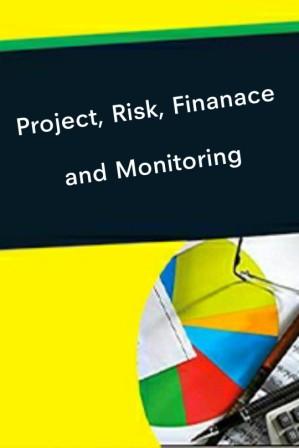A Fight for Human Rights: Women’s Rights and the Road Ahead
How will the world progress when half its people fight for the bare minimum? With every fight and struggle, she takes one step forward, only to be dragged two steps back in the name of fitting into the societal norms. The struggles women faced centuries back still feel the same in the 21st century. However, the topic of feminism is taken as a joke and people lack understanding of the depth of the matter. The stereotyping of women persists where their rights are invalidated in the name of outdated beliefs. Women across the globe are fueling their fights and still fighting the patriarchy for the right to their bodies, free life and a place with no violence. The world is still not progressing enough to experience gender equality till 2030.
_1738844565.webp)
Advances in Women’s Rights
Women have persistently challenged their oppressors for their fair share of rights. Progress is still a long way to come but strides are now even. Many countries have ensured women their rights to reproductive health and legalization of abortion according to the choice of women. Similarly stronger laws are being made for protecting women against violence, harassment and workplace equality.
Educational rights have also improved recently. Women are now advancing in fields like politics, business, and STEM fields making them contribute their skills to society. Countries like Iceland have also fueled the transition by working on equal pay rights making historical achievements for women. It is high time to understand that when women of the nation thrive the nation thrives as well. Around 20% per capita GDP increase is expected when women are employed at the same rate as men in any nation (World Bank, 2018).
During the pandemic, it was easily seen that a large number of essential jobs performed were by women. This gained them the status of care workers which made people understand they deserved respect and a greater appreciation for their work and unconditional services (Office of the Director of National Intelligence, 2021).
Setbacks and Ongoing Challenges
At the current rate of development in which we are going, it will take us 300 years to end child marriage. 286 years to remove any laws of discrimination against women and about 140 years to allow women to represent high-power roles in any organisation (United Nations, 2023). Fights for feminism were never to make women superior to men. It was to ensure that women get the same rights as men to live their lives as they want. Regardless of the type of discrimination, a violation that might seem simple to you can deteriorate the living conditions of other human beings.
Gender-based violence is at its peak. Incidents of feticide and sexual violence are still very prevalent in many cultures. The rise of conservative movements in some nations is reversing the hard-earned struggles of women from generations in the name of old traditions. Many countries still criminalize abortion. Not wondering about the consequences and endangering the lives of many women and unborn children.
Customary practices are usually dominated by men (United Nations). When it starts to influence the life of women they can barely participate in their welfare. When women's rights are not protected they are forced to stay under highly abusive circumstances. Without proper protection and help, they struggle for necessities like food, shelter and sanitation.
Fight against Forced Conservatism
Women in Iran are facing this gut-wrenching oppression. The law for compulsory veiling is making women and girls face serious fines, penalties and travel bans if they defy the veiling law. It has 74 articles that have restrictions on the education and employment of women as well. With penalties as harsh as death sentences, even peaceful activism seems impossible. Such a suffocating system is only contributing to mending creative and independent women into puppets of powerful men and starting a reign of repression (Amnesty International, 2024).
“Women's life freedom is under serious threat after women are being prosecuted to stand up for themselves and their rights.” Diana, MENA.
The gender pay gap in countries is also a persistent topic of inequality. The legal loopholes that make women face systematic barriers create a bias that makes women struggle to ask for equal-paying opportunities for the same work. A society which is against women's advancements will be prone to conflicts and instability. Violence in families produces more violent families which will lead to a collapsing society.
Global women’s rights Movements
Different parts of the world have their different struggles. Women from Southeast Asian countries are fighting against mending them into traditional conservative roles. Their fight is far more rooted, making their progress slow. They are in feminist advocacy for basic human rights, the right to education and the freedom to choose their way of living.
Women from America, Mexico and Brazil are protesting against crimes against women. They are in search of strong legal protection making them feel safe and punish the perpetrators. Meanwhile, women from Europe are ready to work against opposition on gender studies, LGBTQ+ rights and their reproductive freedom in society.
Complications in pregnancy and childbirth are a leading cause of maternal mortality. Hence, neither woman’s health nor safe childbirth is applied when dealing with issues related to women.
Countries like Argentina, Mexico, and Ireland became the first ones to understand the need for women’s rights in their bodies. These countries legalized abortion, giving women the right to choose their reproductive rights.
The Need for Feminist Men
Despite the global fight for women’s rights. We can win until men ally with us. Resilience is enough to fuel the fights but a support system is very important. Misogyny and sexism might be taken as jokes but these terms hold a lot of meaning to protect women from being discriminated against.
The situation for women’s rights has indeed improved but it does not mean that there is no need for feminism. Many significant achievements in history were only possible for women due to their feminist work. It is proven that one in three women worldwide have experienced violence, either sexual or physical. Women still struggle to get higher organisation work roles due to a social stigma working against their skills and capabilities.
It is estimated that by the year 2030, about 340 million women and girls will be under extreme poverty. Feminism for women’s rights is about one oppressed gender being supported by another. Men are required to play a helpful part in advocating for women’s rights. Calling out inequality and challenges is what makes changes happen faster.
Conclusion
A society is progressive only when it treats its citizens equally. A community that prioritizes the fundamental rights of its people can attain true advancement. Women’s rights in education, legal decisions, cultural norms and rights of their bodies are very essential topics. It will take time to dismantle such a deep-routed biased society but without taking measures we cannot expect a further result. A nation cannot progress with half of its helping force forced to stay marginalized. The future of Women’s rights is still blurred. In the era of technology, it is the best boon to use to shatter the regressive mindset of people. Online support and e-platforms can help to expand the reach of the emerging issues.
Reference list
Amnesty International (2024). Iran: New compulsory veiling law intensifies oppression of women and girls. [online] Amnesty International. Available at: https://www.amnesty.org/en/latest/news/2024/12/iran-new-compulsory-veiling-law-intensifies-oppression-of-women-and-girls/.
Office of the Director of National Intelligence (2021). Office of the Director of National Intelligence - Global Trends. [online] www.dni.gov. Available at: https://www.dni.gov/index.php/gt2040-home/gt2040-deeper-looks/future-of-womens-rights.
UN Women (2023). The 11 biggest hurdles for women’s equality by 2030. [online] UN Women – Headquarters. Available at: https://www.unwomen.org/en/news-stories/feature-story/2023/09/the-11-biggest-hurdles-for-womens-equality-by-2030.
United Nation (2014). Women’s Rights are Human Rights . [online] United Nations . Available at: https://www.ohchr.org/sites/default/files/Documents/Events/WHRD/WomenRightsAreHR.pdf.
United Nations (2023). Goal 5: Achieve gender equality and empower all women and girls. [online] United Nations Sustainable Development Goals. Available at: https://www.un.org/sustainabledevelopment/gender-equality/.
World Bank (2018). The World Bank in Gender. [online] World Bank. Available at: https://www.worldbank.org/en/topic/gender/overview.














No Comments